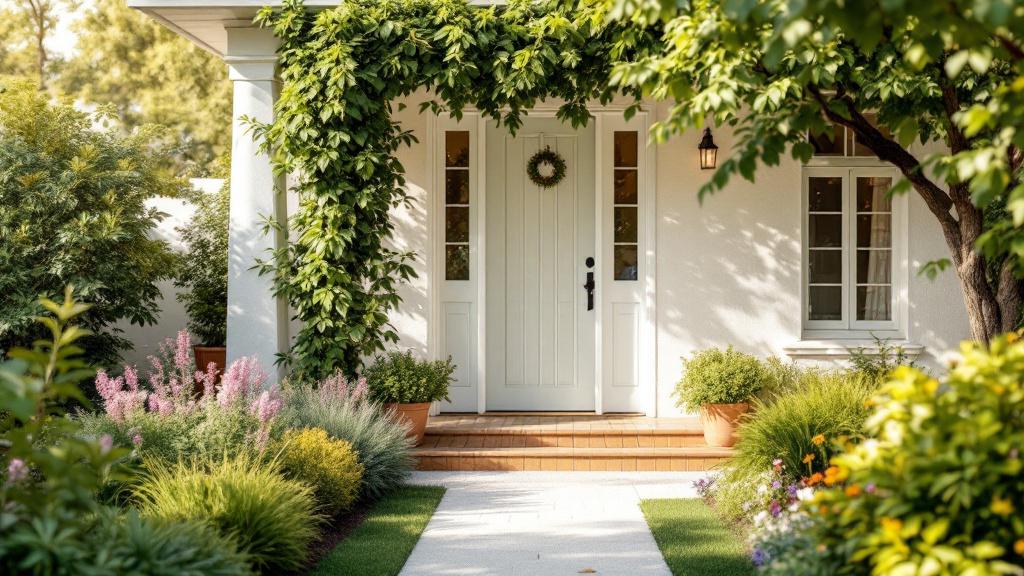Keeping the Home Clean: Essential Housekeeping Tasks
Crafting a Comprehensive Cleaning Routine for Your Home

Introduction: The Art and Science of Housekeeping
Maintaining a clean and organized home is a multifaceted task that, when approached with the right strategies, can lead to a stress-free and healthier living environment. This article will explore essential housekeeping tasks, detailed cleaning schedules, and effective routines that can transform cleaning from a chore into an achievable part of your daily life.
The Ten Golden Rules of Housekeeping

What are 10 rules to keep your house clean?
To keep your house clean, consider implementing these 10 rules:
- Always keep your bedroom clean - A tidy bedroom sets a peaceful atmosphere and enhances sleep quality, reducing daily stress.
- Give things a home - Assign specific places for all items to effectively control clutter and maintain order.
- Clean up messes immediately - Address spills and clutter as they occur to prevent larger messes from building up.
- Have a weekly planning day - Set aside time each week to organize and plan household tasks, aiding in effective decluttering.
- Involve everyone - Encourage all household members to participate in cleaning duties to promote teamwork and shared responsibility.
- Make your bed every morning - This simple task helps create a disciplined habit and starts your day positively.
- Clean the kitchen after every meal - Regularly tidying the kitchen prevents mess accumulation and maintains hygiene.
- Use the '6/10 Method' - Break down tasks into manageable segments throughout the week to sustain cleanliness without feeling overwhelmed.
- Control dirt and dust - Implement strategies in your entryway, like a no-shoe policy, to minimize dirt brought into the home.
- Accept that perfection isn’t necessary - Aim for order, understanding that a little clutter is completely normal and manageable.
Strategies for effective household cleaning
Consistency is key when it comes to efficient household cleaning. Adopting a cleaning style that suits your lifestyle is vital. Here are several effective strategies:
- Daily Cleaning Schedule: Allocate just 15 minutes daily for surface cleaning and organizing to maintain order without dedicating large blocks of time.
- Room-by-Room Approach: Focus on one room per cleaning session, which prevents overwhelm and allows for thorough cleaning.
- Checklists: Create a comprehensive checklist for each room to ensure all tasks are addressed, helping to streamline the cleaning process.
Practical advice and cleaning routines
In addition to the golden rules, here are practical tips to maintain a tidy home:
- Tidy as You Go: Adopt a 'clean-as-you-go' mentality, especially in the kitchen, to keep countertops clear and avoid messy pile-ups.
- Daily Routines: Incorporate simple tasks into your day, like unloading the dishwasher and dusting surfaces, to foster a consistently clean environment.
- Mind the Small Details: Regularly clean high-touch surfaces and appliances to maintain hygiene, especially in kitchens and bathrooms.
By following these rules and strategies, keeping your house tidy becomes a manageable and stress-free part of daily life.
Daily, Weekly, and Monthly Cleaning Task Essentials

What does a typical house cleaning duties list include?
A comprehensive cleaning duties list categorizes tasks based on their frequency and importance to maintain a pristine home. Here’s a snapshot of common activities:
Daily Tasks
- Make the Bed: A tidy bed sets a clean tone for the day.
- Wipe Down Surfaces: Clean kitchen and bathroom counters to avoid buildup.
- Unload/Load the Dishwasher: Keeping dishes clean prevents overwhelming chores.
- Take Out Trash: Empty bins, especially in high-traffic areas.
Weekly Tasks
- Vacuum or Mop Floors: Focus on high-traffic areas to keep them dirt-free.
- Sanitize Bathrooms: Clean toilets, sinks, and other surfaces thoroughly.
- Launder Linens: Change bed sheets and towels regularly for hygiene.
Monthly Tasks
- Dust Surfaces: Remove dust from shelves and harder-to-reach places.
- Clean Windows: Ensure clarity and let in natural light.
- Deep-Clean Kitchen Appliances: Descale coffee makers, refrigerators, and ovens to ensure functionality.
Cleaning Frequency and Structure
Each room may require a different frequency for cleaning tasks:
| Room | Daily Frequency | Weekly Frequency | Monthly Frequency |
|---|---|---|---|
| Kitchen | Surfaces, dishes | Floors, appliances | Deep-clean |
| Bathroom | Sinks, tidy | Full sanitation | Mirrors, fixtures |
| Living Areas | Clutter, surfaces | Vacuuming | Dusting, windows |
| Bedrooms | Make the bed | Vacuuming | Declutter closet |
This structure helps create a manageable routine, ensuring that every area of your home is addressed systematically, reducing stress and maintaining cleanliness with ease.
Crafting Your Personalized Cleaning Schedule

How can I create an effective house cleaning schedule?
To create an effective house cleaning schedule, start by establishing a daily routine. This should include simple tasks such as:
- Making the bed
- Washing dishes after each meal
- Wiping down surfaces
These small actions contribute to maintaining a tidy environment.
Next, focus on a weekly cleaning plan that encompasses different areas of your home. Assign specific days for cleaning:
- Monday: Bathrooms
- Tuesday: Living room
- Wednesday: Kitchen
- Thursday: Bedrooms
- Friday: Floors and dusting
This ensures thorough maintenance without feeling overwhelmed as each area gets dedicated attention.
Incorporate a monthly deep-cleaning checklist to tackle those often-ignored areas. Consider tasks like:
- Scrubbing grout in the bathroom
- Washing duvet covers
- Cleaning windows
Utilizing a template to organize tasks and specifying what to tackle each day can keep you on track.
Efficient housekeeping practices
To make the cleaning process more manageable, implement efficient practices:
- Establish a daily 15-minute tidy-up routine to prevent clutter from accumulating.
- Use a cleaning caddy to store supplies, making them easily accessible while you clean.
- Involve the family in housekeeping to share responsibilities, fostering a team approach to cleanliness.
Customized cleaning routines
Every household is unique, so tailor your routine to fit your lifestyle. Adjust the frequency of tasks based on usage—high-traffic areas like kitchens and bathrooms require more frequent attention than rarely used spaces.
By breaking cleaning duties into manageable daily, weekly, and monthly tasks, you can maintain a clean and welcoming home with minimal stress.
The Daily 6 Cleaning Method

What is the daily 6 cleaning list and how can I implement it?
The daily 6 cleaning list is part of a practical routine known as the 6/10 cleaning method. This system effectively breaks down household duties into manageable tasks that can be completed daily, thereby easing the burden of maintaining a clean home.
Daily Tasks Include:
- Making Beds: Start your day by making your bed to create an organized bedroom and set a productive tone.
- Washing Dishes: Tackle dishes immediately after meals to prevent pile-up in the sink.
- Scrubbing Sinks: A quick wipe keeps sinks sparkling and hygienic.
- Wiping Kitchen Counters: Regularly disinfecting counters helps maintain a clean cooking space.
- Vacuuming Floors: Daily vacuuming in high-traffic areas reduces dirt and keeps air quality fresh.
- Doing One Load of Laundry: This prevents laundry from piling up, making the task less overwhelming.
To implement this method, create a checklist for these daily tasks and commit to completing them each day. You can even set reminders to help you stay focused and reduce the anxiety that often accompanies cleaning.
Stress reduction techniques in cleaning
Incorporating the daily 6 cleaning list into your routine not only enhances organization but also serves as a stress reduction technique. Having a clear plan allows you to manage your time effectively, preventing overwhelming clutter from accumulating in your home.
Allocating just a few minutes each day to these tasks can lead to a significant drop in stress levels, as the environment around you becomes more calming and organized.
Actionable cleaning advice
- Weekly Tasks: Don’t forget to include weekly deep-cleaning tasks such as wiping out the fridge, mopping floors, and cleaning bathrooms, which promote a continuously clean environment.
- Checklists: Use checklists for daily activities to track your progress, making cleaning feel less of a chore and more achievable.
- Balance: Embrace the idea of balancing cleaning with leisure; this routine keeps your home tidy while allowing you time for relaxing activities.
Adopting this structured, mindful approach to daily cleaning can transform your home environment and reduce the stress associated with upkeep.
Printable and Professional Cleaning Checklists
Where can I find a printable house cleaning checklist?
You can find a variety of printable house cleaning checklists on platforms like Canva, which offers customizable templates specifically designed for cleaning tasks. These templates focus on various areas of your home, such as the kitchen, bedroom, or laundry room.
Additionally, there are free printable cleaning planners, which provide daily, weekly, and monthly cleaning schedules to simplify your cleaning processes. These checklists can help you keep track of tasks for each room, ensuring nothing is overlooked.
If you prefer a more structured approach, consider purchasing a comprehensive e-book that contains multiple cleaning checklists for just $6.00. This could range from basic daily upkeep tasks to detailed weekly plans.
What does a professional cleaning checklist include?
A professional cleaning checklist, including well-regarded options like the MaidPro 49-Point Checklist, covers a wide array of tasks essential for thorough cleaning. For instance:
- Kitchen: Disinfecting countertops, cleaning appliance exteriors, and washing floors.
- Bedrooms: Making beds, dusting lamps, and vacuuming underneath beds to ensure cleanliness.
- Bathrooms: Scrubbing and disinfecting tubs, toilets, and chrome fixtures to maintain hygiene.
- Living Areas: Vacuuming upholstered furniture and dusting all surfaces.
This checklist format not only promotes routine cleaning but also includes specific procedures for deep cleaning, ensuring no corner of the home goes unattended.
Tools for effective housekeeping
Using proper tools is key for effective housekeeping. Essentials may include:
- Cleaning Solutions: Multipurpose cleaners for various surfaces.
- Microfiber Cloths: Great for dusting and wiping surfaces without leaving streaks.
- Vacuum Cleaner: A versatile tool for cleaning floors and upholstery.
- Mop and Bucket: For regular floor maintenance.
By utilizing these tools along with printable checklists, you can create a cleaning routine that aligns with professional standards and keeps your home spotless with ease.
Efficient Cleaning Techniques: The 20/10 and 5x5 Methods

What is the 20/10 rule for cleaning and how does it work?
The 20/10 rule for cleaning is a practical approach that combines focused effort with relaxing intervals. It involves committing 20 minutes to cleaning a specific area of your home, followed by a 10-minute break. This rhythm helps prevent burnout and transforms cleaning into a manageable task rather than a daunting chore. During the cleaning phase, it’s beneficial to set a timer and concentrate on designated spaces to avoid feeling overwhelmed.
To elevate the experience, consider playing music or podcasts. The upbeat tempo can boost your motivation and make cleaning feel less laborious. The subsequent 10-minute downtime provides a necessary pause, allowing you to recharge before resuming your cleaning routine. Incorporating this method into your schedule means you can maintain productivity without sacrificing enjoyment.
What is the 5x5 cleaning method and how is it used?
The 5x5 cleaning method is another effective strategy for tackling home cleaning, especially for those pressed for time. This technique involves selecting five areas in your home and dedicating five minutes to clean each, culminating in a total of 25 minutes. This method, popularized by motivational user The Secret Slob, aims to simplify cleaning and make it more approachable.
To implement the 5x5 technique, set a timer for five minutes and focus your efforts on decluttering or cleansing each designated zone. When the timer sounds, move on to the next area. Some users, like Ashley Chalmers, may find it challenging to adhere strictly to the five-minute time limit, yet they appreciate how it sparks productivity and can lead to extended cleaning sessions as they gain momentum.
Motivating cleaning methods
Both the 20/10 and 5x5 methods emphasize simplicity and structure in cleaning routines. By breaking tasks into small, timed intervals, these techniques not only enhance efficiency but also diminish feelings of overwhelm. They empower you to maintain tidiness consistently while allowing time for other activities in your daily life. Whether you choose a brisk cleaning session or a slightly longer one, incorporating these methods can lead to a cleaner, more organized home.
| Method | Structure | Benefits |
|---|---|---|
| 20/10 Rule | 20 minutes cleaning, 10 minutes break | Prevents burnout, motivates with music, maintains focus |
| 5x5 Method | 5 areas, 5 minutes each | Simple, encourages frequent tidying, boosts productivity |
Understanding the Principles of Effective Housekeeping
What are the 5 principles of cleaning in housekeeping?
The five principles of cleaning in housekeeping lay the foundation for maintaining a healthy and tidy environment. They include:
- Importance of Cleaning: Regular cleaning prevents the buildup of dirt, dust, and contaminants that can negatively affect health.
- Basic Hygiene Practices: Adhering to hygiene practices like washing hands often and using clean tools is essential in maintaining a sanitized living space.
- Proper Cleaning Procedures: Using the right cleaning agents and following manufacturer instructions ensures effective sanitation.
- Cleaning Frequencies: Establishing a routine based on the usage of each area helps determine how often cleaning tasks should be performed, catering to high-traffic spaces like kitchens and bathrooms.
- Hierarchy of Cleaning: This principle involves first removing visible dirt, followed by sanitizing and disinfecting surfaces to eliminate germs and pathogens effectively.
By implementing these principles, one can maintain a cleaner, healthier, and more organized home environment. Regular attention to sanitation and hygiene practices fosters a welcoming space for both residents and guests.
Involving the Entire Household in Cleaning Tasks
Shared Cleaning Responsibilities
Cleaning a home can often feel overwhelming, but sharing responsibilities can lighten the load. Assign specific tasks to family members according to their abilities. For example, younger children can handle simple tasks such as sorting toys or dusting low surfaces while older kids can take on more complex responsibilities like vacuuming or helping with laundry.
Simplification Strategies
A simplified home is easier to clean. Reducing clutter not only minimizes cleaning time but also helps everyone in the household maintain their spaces. Consider adopting a rule that every item has its own designated ‘home’ — this makes it easier to tidy up and reduces the chaos that comes with scattered belongings.
Tips for Involving Family in Housekeeping
To encourage shared responsibility, create a weekly cleaning schedule outlining everyone's tasks. Use fun incentives, like a family activity once chores are completed, to motivate participation. Additionally, involving children in daily tidying routines helps them learn the importance of cleanliness and the value of shared effort, making cleaning a family affair rather than a chore. By ensuring that everyone contributes, the home can be maintained in a clean, organized, and welcoming state.
Conclusion: Achieving a Spotless Home with Minimal Stress
By understanding and implementing these essential housekeeping tasks and methods, maintaining a clean home becomes a manageable and less daunting task. A well-organized cleaning schedule, combined with effective methods like the 20/10 rule and shared responsibilities, allows for an orderly and hygienic living environment without overwhelming effort. Embrace these strategies to simplify your cleaning routine, ensuring that your home remains a sanctuary of comfort and cleanliness.
References
- Daily Rules that Will Keep Your Home Clean - Declutter in Minutes
- 20 Housekeeping Duties to Expect From Your Housekeeper? - Vella
- Daily 20-Minute Cleaning Routine to Tidy Your Home
- A House Cleaning Schedule You'll Actually Stick To
- House Cleaning Checklist the Complete Guide - Molly Maid
- How to Clean Your House in 20 Minutes a Day for 30 Days
- The Minimalist's Guide to Simple Housework - Zen Habits Website
- A Comprehensive Checklist for Deep Cleaning Your House

How to Plan for Long-Term Home Care Services

How Home Team Helps Families Make Informed Care Decisions

How Home Team's Caregivers Provide Peace of Mind for Families



